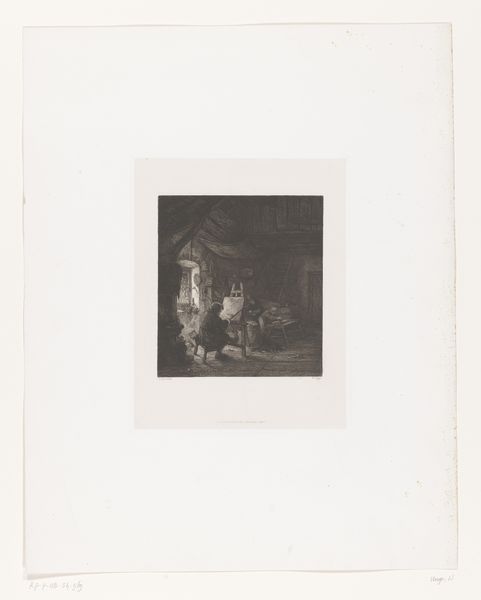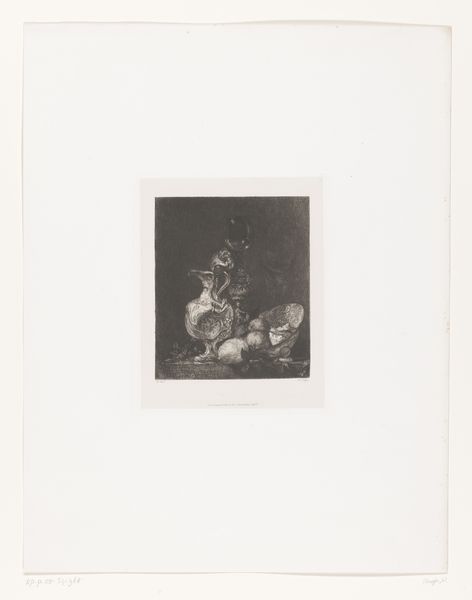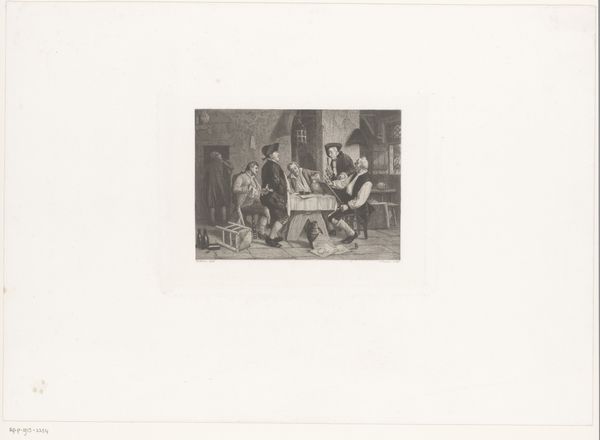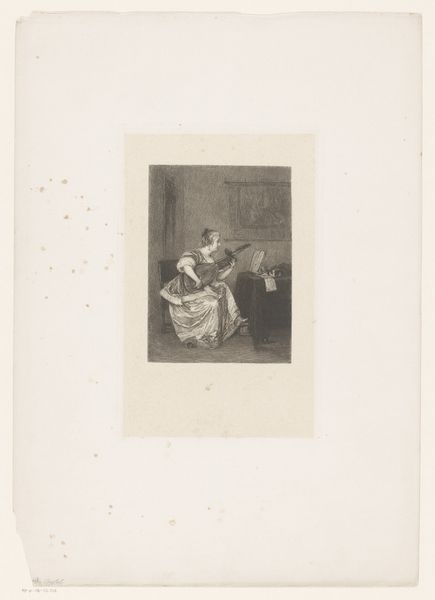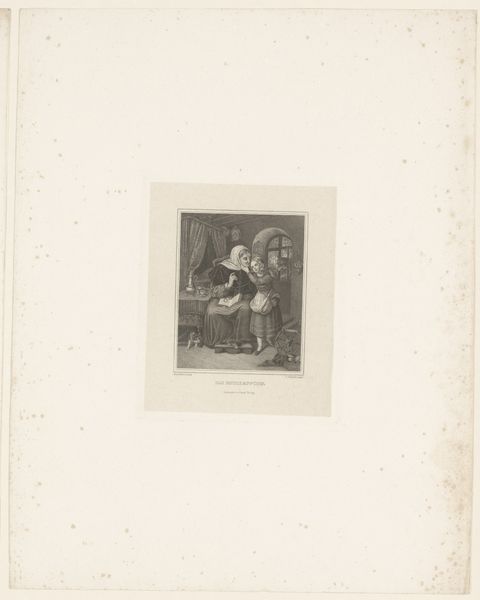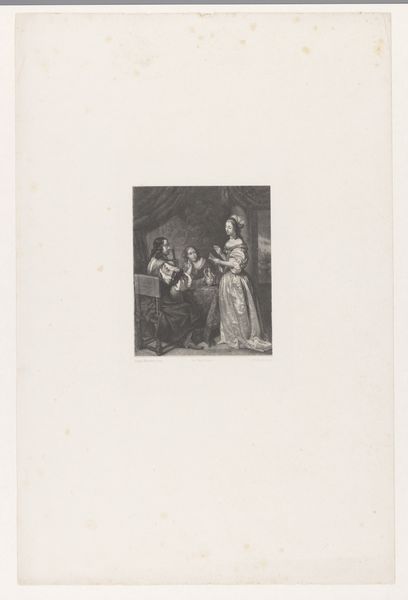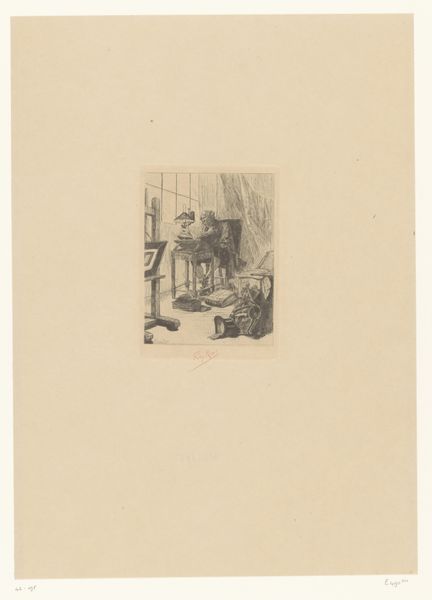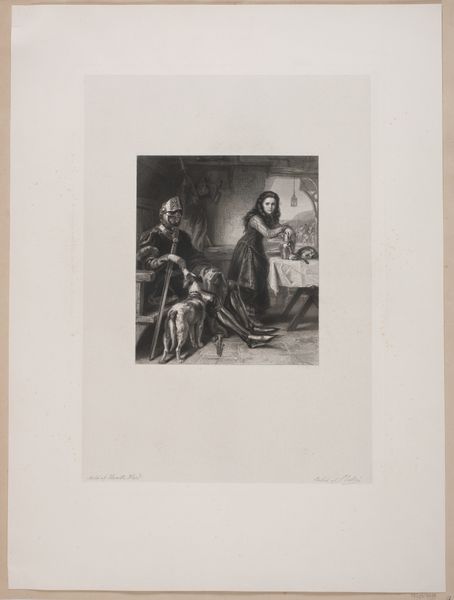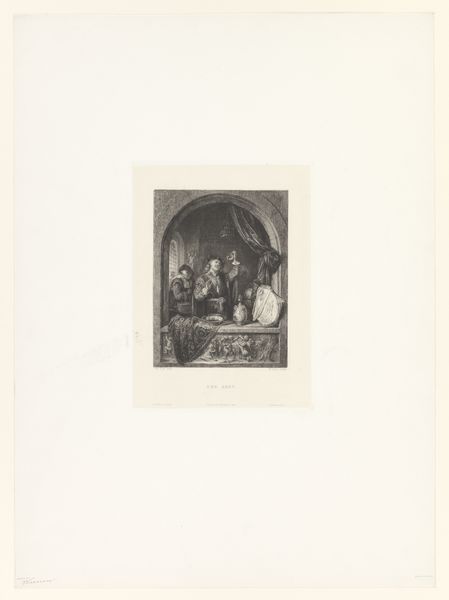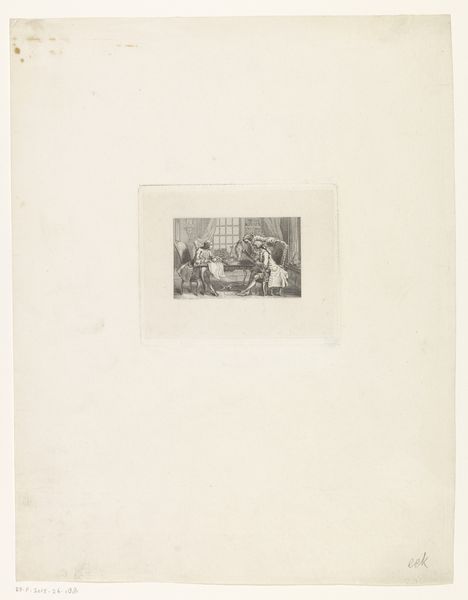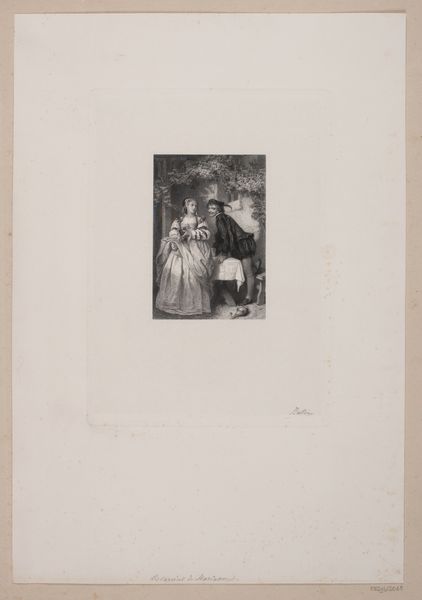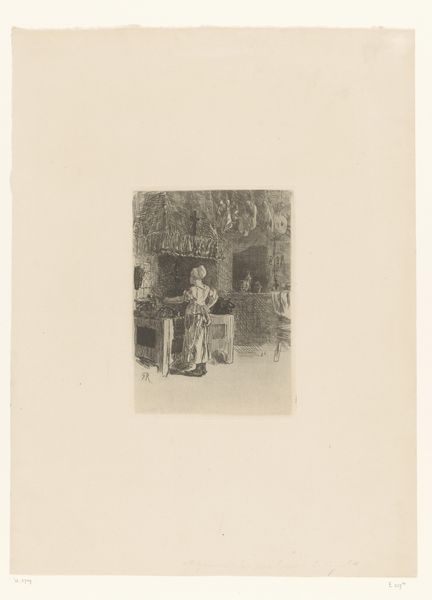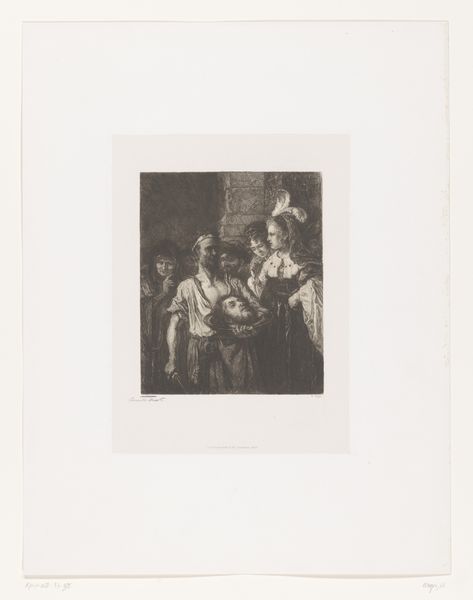
print, etching, paper, ink, engraving
#
portrait
#
dutch-golden-age
#
ink paper printed
# print
#
etching
#
figuration
#
paper
#
ink
#
line
#
genre-painting
#
engraving
#
realism
Dimensions: height 269 mm, width 216 mm
Copyright: Rijks Museum: Open Domain
This etching, "Man en vrouw aan de maaltijd," was created by William Unger in the 19th century. The printmaking process, which is based on acid’s corrosive action, involves considerable labor and technical expertise. Unger would have covered a metal plate with a waxy, acid-resistant ground, then scratched an image into it. The plate was then immersed in acid, which bit into the exposed lines. By repeating this process, Unger achieved varied line depths, and the interplay of light and shadow that you can see here. When printed, the etched lines hold ink, transferring the image to paper. In this work, Unger masterfully manipulates the etching process to convey the texture and atmosphere of a modest domestic scene. Consider the social context: prints like this one made art accessible to a wider audience in the 19th century, in line with new modes of production and consumption. Ultimately, understanding the labor-intensive process of etching allows us to fully appreciate the artist's skill, and this work's cultural significance.
Comments
No comments
Be the first to comment and join the conversation on the ultimate creative platform.
